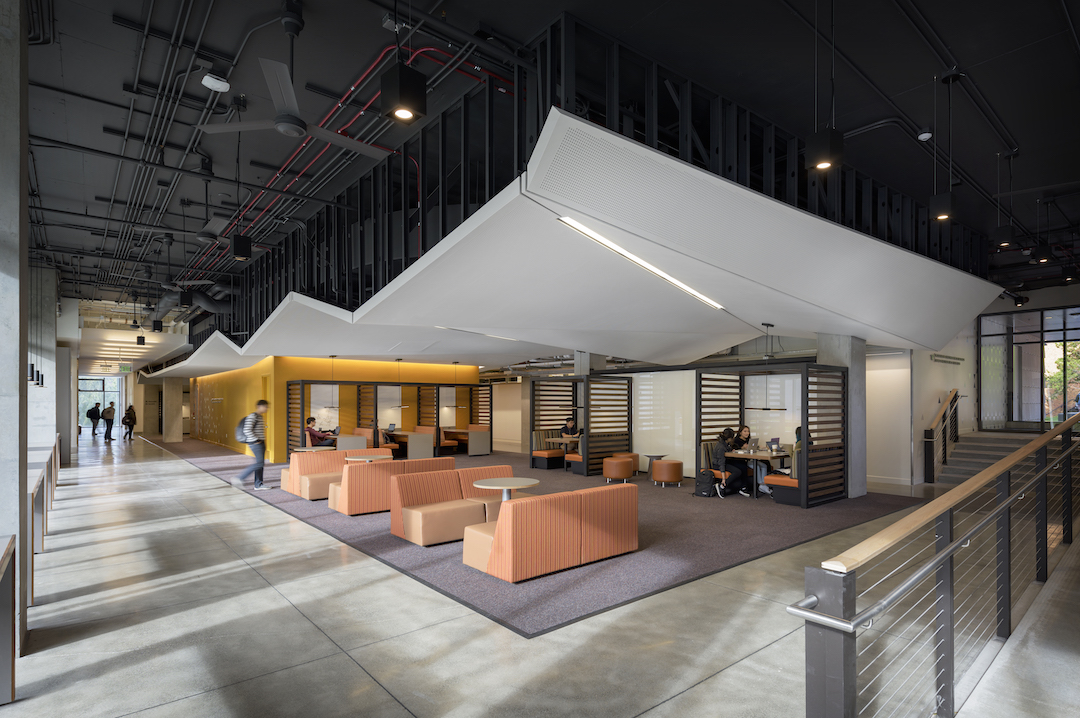Dane Stokes started using computational design while an undergraduate at the University of Pennsylvania, where it helped him manage a series of fabrication projects that included wall systems with several hundred unique panel components.
Now, computational design is one of the AEC industry’s buzzwords, and Stokes, a Design Technology Specialist with ZGF Architects’ Seattle office for the past three years, has seen his firm apply data to the design of a range of projects. These include the 41-story 2014 Fairview Avenue apartment tower in Seattle, whose wavy, curved exterior design required literally hundreds of computer iterations to get it right; and a 1.2 million-sf corporate headquarters in Belleview, Wash., where ZGF had to figure out how 15,000 employees would interact, especially during peak periods like lunch hours.
ZGF’s investigation for the latter project included interviews with company employees and conversations with the client’s consultants on security, IT, even food service. Now that the building has opened, Stokes says that ZGF might keep tracking occupant traffic with machine-learning sensors and cameras.
 ZGF is using computational design to inform all of its projects, including the 78,000-sf NanoES research and collaboration building at the University of Washington. Photo: Aaron Leitz Photography
ZGF is using computational design to inform all of its projects, including the 78,000-sf NanoES research and collaboration building at the University of Washington. Photo: Aaron Leitz Photography
ZGF gathers pre- and post-occupancy data with intent to provide optimal comfort and circulation. Stokes refers specifically to the 78,000-sf Nano Engineering and Sciences research and collaboration building at the University of Washington. He notes that this building is cooled passively, and that the building team “tried out a lot of progressive HVAC systems.” ZGF conducted questionnaires of occupants about how they were experiencing the space, and used sensors to track those experiences.
Stokes says the Nano project was the first where ZGF “located the responses,” so that if several people who complained that they were either too hot or too cold were actually working near each other, that would be a reliable clue about where and how the HVAC system needed adjusting.
SEE ALSO: Say 'Hello' to erudite machines
Stokes sees opportunities for computational design to reduce materials, and to free designers from being mired in mundane or labor-intensive tasks, such as documentation, to focus on design decisions “that really affect our finished product.” As algorithms and computing systems become more sophisticated and powerful, designers will be able to communicate more generally with computer programs they rely on for work production.
ZGF uses computational solutions on all of its projects. And its office serves as a kind of test bed for “failing forward,” he says. “There’s no point in designing something if it doesn’t make it into the project,” says Stokes. The goal is “to continuously improve on every iteration of a building design.”
Related Stories
Daylighting | Aug 18, 2022
Lisa Heschong on 'Thermal and Visual Delight in Architecture'
Lisa Heschong, FIES, discusses her books, "Thermal Delight in Architecture" and "Visual Delight in Architecture," with BD+C's Rob Cassidy.
Laboratories | Jun 29, 2022
The "collaboratory" brings digital innovation to the classroom
The Collaboratory—a mix of collaboration and laboratory—is a networking center being designed at the University of Denver’s College of Business.
Building Materials | Jun 20, 2022
Early-stage procurement: The next evolution of the construction supply chain
Austin Commercial’s Jason Earnhardt explains why supply chain issues for the construction industry are not going to go away and how developers and owners can get ahead of project roadblocks.
Healthcare Facilities | Jun 20, 2022
Is telehealth finally mainstream?
After more than a century of development, telehealth has become a standard alternative for many types of care.
AEC Business Innovation | Jun 15, 2022
Cognitive health takes center stage in the AEC industry
Two prominent architecture firms are looking to build on the industry’s knowledge base on design’s impact on building occupant health and performance with new research efforts.
Wood | Apr 13, 2022
Mass timber: Multifamily’s next big building system
Mass timber construction experts offer advice on how to use prefabricated wood systems to help you reach for the heights with your next apartment or condominium project.
AEC Tech | Apr 13, 2022
A robot automates elevator installation
Schindler—which manufactures and installs elevators, escalators, and moving walkways—has created a robot called R.I.S.E. (robotic installation system for elevators) to help install lifts in high-rise buildings.
Hotel Facilities | Apr 12, 2022
A virtual hotel to open in the metaverse
A brand of affordable luxury hotels that launched in 2008, citizenM has announced it will purchase a digital land site in The Sandbox, a virtual game world owned by Animoca Brands.
Modular Building | Mar 31, 2022
Rick Murdock’s dream multifamily housing factory
Modular housing leader Rick Murdock had a vision: Why not use robotic systems to automate the production of affordable modular housing? Now that vision is a reality.
AEC Tech Innovation | Mar 9, 2022
Meet Emerge: WSP USA's new AEC tech incubator
Pooja Jain, WSP’s VP-Strategic Innovation, discusses the pilot programs her firm’s new incubator, Emerge, has initiated with four tech startup companies. Jain speaks with BD+C's John Caulfield about the four AEC tech firms to join Cohort 1 of the firm’s incubator.
















